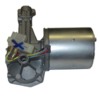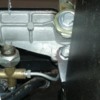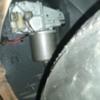JFB,
quote:
Originally posted by JFB #05177:
Does the "front lock first" for stability apply to mid engine?
I'm no expert but mid-engine, front-mid-engine, front engine or rear engine isn't the issue. It's all about weight distribution, front-to-back, side-to-side and top-to-bottom. No matter what the configuration of the car, there is a forward weight transfer during braking. This is a dynamic event and how much transfer and the curve depends on many things including weight distribution, suspension, deceleration rate and others. During my racing days we experimented with brake bias quite a bit because it not only affect ultimate straight line braking but handling/trail braking and behavior in traffic. We could get away with experimenting at the race track because there were always people there to clean up the mess if something didn't go well.
But, we are really discussing street cars. Personally I would never set up a street car with brake bias that caused the rears to lock up first. Road conditions and speeds vary greatly. It's a lot easier to control the car by modulating the front brakes during hard braking. Cars with more rear weight bias can typically tolerate more rear brake bias. Over do it and around you go. Just my 2 cents.
Mike





